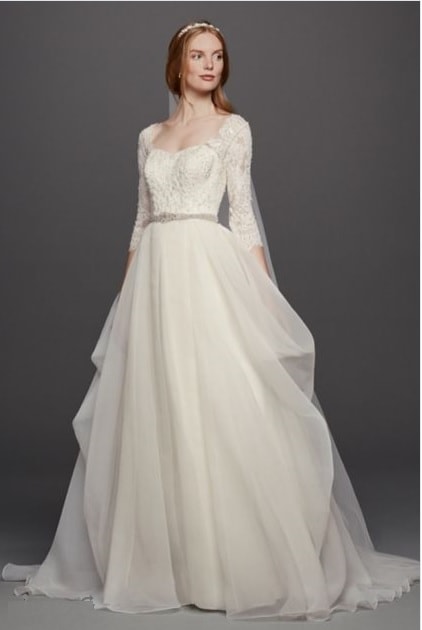
Wedding Dresses
A wedding dress or wedding gown is the clothing worn by a bride during a wedding ceremony.

Are you sure you are ready to get married? OK, that is rather rude of me to ask. However, I really want to make sure that you are making the right decision. Are you sure that he deserves you? OK, let's assume that you are in fact ready and that he is a prince. Let's now get down to the business of learning about gowns.
Color, style and ceremonial importance of the gown can depend on the religion and culture of the wedding participants. Figuring out what customs you wish to follow would be an obvious good starting point. In the United States, the wedding dress trend currently is white or ivory, as this symbolizes purity.
In the United States, a high percentage of wedding dresses on the market are strapless dresses or sleeveless, in part because such dresses require less skill from the designers and are easier to alter to fit correctly. However, the sleeved wedding gown as well as wedding gowns with straps have both become more popular in recent years.
What is the most popular wedding dress color?
In Western cultures, brides often choose a white wedding dress, which was made popular by Queen Victoria in the 19th century. When we say "western cultures" we are not talking about the West as in cowboys and cowgirls. If you are interested in that sort of west, you can learn more about westernwear clothing in our terms section.
In Eastern cultures, brides often choose red to symbolize auspiciousness.
If you wish to know which color is most popular around the world, you will need to investigate population records for the different regions. If you actually live in the United States, the answer is white gowns are most often worn.
Many wedding dresses in China, India (wedding sari), Pakistan (heavily embroidered shalwar qameez or lehngas) and Vietnam (in the traditional form of the Ao dai) are red, the traditional colour of good luck and auspiciousness. In modern times, many women choose other colours besides red. In modern mainland Chinese weddings, the bride may opt for Western dresses of any colour, and later don a traditional costume for the official tea ceremony. In modern Taiwanese weddings, the bride generally picks red (following Chinese tradition) or white (more Western) silk for the wedding gown material, but most will wear the red traditional garment for their formal wedding banquets.
Red wedding saris are the traditional garment choice for brides in Indian culture. Sari fabric is also traditionally silk. Over time, colour options and fabric choices for Indian brides have expanded. Today fabrics like crepe, Georgette, charmeuse, and satin are used, and colors have been expanded to include gold, pink, orange, maroon, brown, and yellow as well. Indian brides in Western countries often wear the sari at the wedding ceremony and change into traditional Indian wear afterwards (lehnga, choli, etc.).
A Japanese wedding usually involves a traditional pure white kimono for the formal ceremony, symbolizing purity and maidenhood. The bride may change into a red kimono for the events after the ceremony for good luck.
In the Philippines, variations of the Baro't saya adapted to the white wedding tradition are considered to be wedding attire for women, along with the Barong Tagalog for men.
History of wedding dresses in America:
The indigenous peoples of the Americas have varying traditions related to weddings and thus wedding dresses. A Hopi bride traditionally had her garments woven by the groom and any men in the village who wished to participate. The garments consisted of a large belt, two all-white wedding robes, a white wedding robe with red stripes at top and bottom, white buckskin leggings and moccasins, a string for tying the hair, and a reed mat in which to wrap the outfit. This outfit also served as a shroud, since these garments would be necessary for the trip through the underworld.
A Pueblo bride wore a cotton garment tied above the right shoulder, secured with a belt around the waist.
In the traditions of the Delaware, a bride wore a knee-length skirt of deerskin and a band of wampum beads around her forehead. Except for fine beads or shell necklaces, the body was bare from the waist up. If it was a winter wedding, she wore deerskin leggings and moccasins and a robe of turkey feathers. Her face was painted with white, red and yellow clay.
The tribes of Northern California (which include the Klamath, the Modoc and the Yurok) had a traditional bridal dress woven in symbolic colors: white for the east, blue for the south, yellow (orange) for the west; and black for the north. Turquoise and silver jewelry were worn by both the bride and the groom in addition to a silver concho belt. Jewelry was considered a shield against evils including hunger, poverty and bad luck.
About Contemporary Western Culture Wedding Dresses:
A contemporary Western wedding dress follows popular fashions in Western wedding gown selection from the year 2000 on. Dresses are usually white or ivory, and follow a pattern for popular silhouettes, necklines, and gown lengths. As with most things of the modern era, color or style of the wedding gown is not set in stone. If a bride wishes to wear a dress of a different color, style, or fabric she is certainly welcome to do so. The bride is always correct.
What are popular wedding dress silhouettes?
The word "silhouette", because it implies the outline of a form, has been used in both fashion and fitness to describe the outline shape of the body from a particular angle, as altered by clothing in fashion usage. Historians of costume also use the term when describing the effect achieved by the clothes of different periods, so that they might describe and compare the silhouette of the 1860s with that of the other decades of the 19th century. A desirable silhouette could be influenced by many factors. The invention of crinoline steel influenced the silhouette of women in the 1850s and 60s. The posture of the Princess Alexandra influenced the silhouette of English women in the Edwardian period. In regard to clothing, the silhouettes refers to the general shape of the garment.
Some of the most popular
contemporary silhouettes for a wedding dress includes: A-line, above-the-knee, column, empire,
meringue, mermaid, princess, and trumpet. Below are explanations regarding
some of the options.
A-line: A dress or skirt silhouette that is narrower
at the top, flaring gently wider toward the bottom thereby resembling the letter
A. Works well on most figure types; good for disguising bottom-heavy figures.
Above-the-knee: Can be recognized by their tent-like silhouettes, hemmed short above the knee.
Column: In fashion, a column, similar to a sheath dress, is a type of dress designed to tightly fit the body. It is often made of a very light and thin material like cotton or silk, and rarely contains any flourishes. Unlike the shorter cocktail dress and the longer ballroom dress, a column dress typically falls around the knees or lower thighs, and can be either strapped or strapless.
Empire: A type of dress or top where the waist line is raised above the natural waistline, sometimes as high as right below the bust.
Meringue: Characterized by a very full skirt that begins at the waist and continues to a formal length. It has a full bodice and a cinched waistline that falls into a full skirt.
Mermaid: The mermaid dress is close fitting through the bodice, down through the hips and to below the knees where the skirt flares out.
Princess: Designed to hang in smooth, close-fitting, unbroken lines from shoulder to flared hem. Don't all brides want to look like a princess?
Trumpet: A straight skirt with a hem flounce that flares away from the body at the hem.
Their are many different informal categories of wedding dresses which include country, Disney style, bling, modest, sparkly, poofy, and Cinderalla to name a few. I don't mean informal as in not a formal occassion. I mean that maybe they are not technically official dress categories.
What are popular wedding dress necklines? Before we answer that question, lets better understand the meaning of a neckline as it relates to the construction of a clothing. The neckline is the top edge of a garment that surrounds the neck, especially from the front view. Neckline also refers to the overall line between all the layers of clothing and the neck and shoulders of a person, ignoring the unseen undergarments. For each garment worn above the waist, the neckline is primarily a style line and may be a boundary for further shaping of the upper edge of a garment with, for example, a collar, cowl, darts or pleats.
Popular contemporary necklines types for wedding dresses include asymmetric, bateau, halter, jewel, off-the-shoulder, portrait, scoop, sheer, square, strapless, sweetheart, and v-neck. The neckline refers to the shape of the material at the top of the dress as it falls on the neck and shoulders.
Asymmetric: Asymmetrical by its very definition means there is no symmetry or no balance. So this neckline appears different on either side of the centre front.
Bateau: Also known as the "Boatneck". This is a wide, high neckline that follows the curve of the collarbone and ends in points on the shoulder seams.
Halter: Necklines that have a high panel on the front, which is then tied around the neck for support and, optionally, may be tied behind the neck or include a clasp, exposing the back and shoulders.
Jewel: A plain, slightly rounded neckline without a collar. Also known as the T-shirt neckline, the jewel neckline is round and sits at the base of the throat.
Off-the-shoulder: This neckline sits below the shoulders, with sleeve-like straps that cover part of the upper arm. Shows off your collarbone and shoulders.
Portrait: Characterised by a wide, soft scoop from shoulder to shoulder.
Scoop: Also known as a "ballerina neckline", this U-shaped style is often cut low, and occasionally the scoop will continue on the back of the dress.
Sheer: A neckline that is created by "sheer" or translucent fabric, such as lace or netting, rather than an opaque material or strap.
Spaghetti strap: This neckline is nearly strapless, except for the presence of thin, delicate straps; a bit like strings of spaghetti.
Square: The neckline is cut straight across the top in between the straps, creating a "square"-like shape to the top of the dress.
Strapless: A neckline that can be any shape, but is discerned by its lack of straps (neither over the shoulder, nor around the neck).
Sweetheart: A neckline with a plunge in the front in the shape of the top of a heart.
V-neck: A neckline characterized by a plunge in the front shaped like the letter "V".
What is the best wedding dress gown length? Well, that is entirely up to the bride. but we suggest you do you best to the limit the odds of tripping.
Ankle Length Dress: Characterized by a hemline that hits at the ankle.
Floor Length Gowns: Characterized by a hemline that hits the floor.
Knee Length Dresses: Characterized by a skirt that comes to the knee.
Mini Length: Characterized by a skirt that falls very high on the thigh, the shortest option.
Short Length: Characterized by a skirt that falls in between the knee and high on the thigh (length in between a mini and a knee length).
Tea Length: Characterized by a skirt length that falls between a knee and ankle length, usually having a hemline at the mid-shin.
Wedding Dress Resources of possible interest:
Vera Wang: A native New Yorker who spent her career at the forefront of fashion, Vera Wang began a sweeping makeover of the bridal industry in 1990 with the opening of her flagship salon at the Carlyle Hotel in New York City. Today, the salon continues to showcase collections known for sophisticated drama, feminine detailing and a modern approach to bridal design.
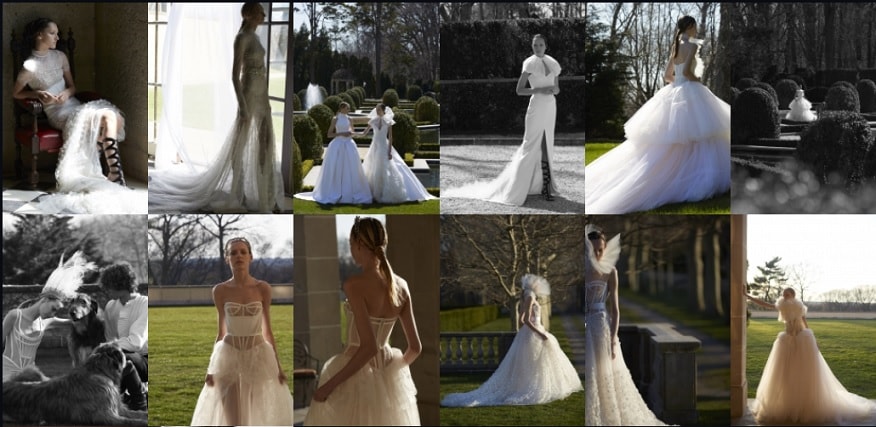
Alfred Angelo: they offered an array of affordable wedding dresses, bridesmaid dresses, flower girl dresses, party and cocktail dresses, and more. Their dresses come with a variety of personalized options, so the gowns you choose for your wedding are guaranteed to fit your dream for the big day. In 2017, Alfred Angelo abruptly closed all of its store locations and filed for Chapter 7 bankruptcy liquidation.
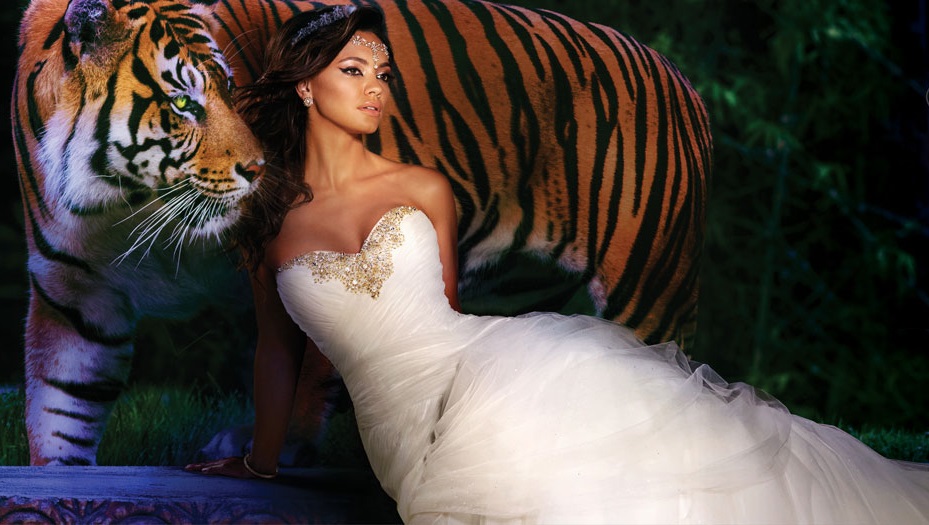
Allure Bridals: Allure Bridals pursues excellence in design and irreproachable craftsmanship to create a gown worthy of a bride’s most treasured moments. They believe brides should feel nothing less than gorgeous on their wedding day. Their designs blend rich fabrics like satin and lace with decadent beading and detailing, in addition to the comfort of our patented Allure construction. The result is their three bridal collections: Allure Bridals, Allure Romance and Allure Couture along with Madison James, their debut designer collaboration.
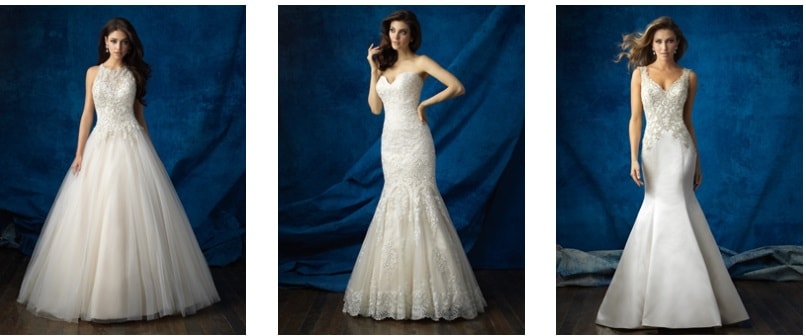
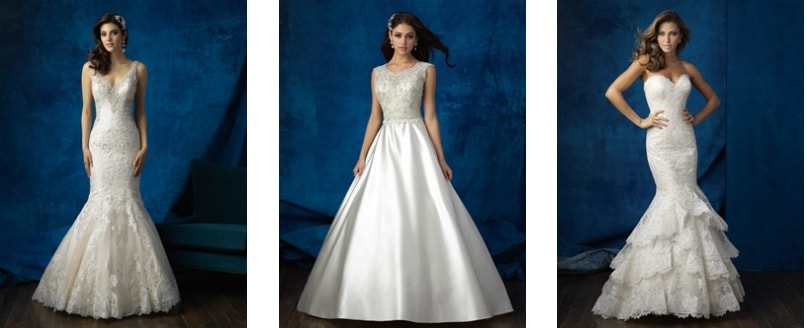
David's Bridal - wedding gown retailer with many store locations. David's Bridal also participates in a variety of bridal shows, many of which include a fashion show coordinated by the show's producer.
Nordstrom Wedding Shop - Nordstrom has wedding dresses, bridesmaid dresses, and much more. You can even find bridal shoes, and lingerie for under the dress.
If you are planning to get married, you may also want to research vintage wedding dresses. They can really be exquisite.
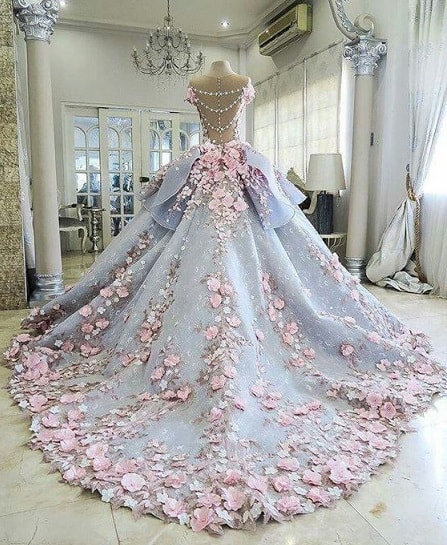
"Something Old, Something New, Something Borrowed, Something Blue, A Silver Sixpence Inside Your Shoe."
Learn about bridesmaid dresses.
Learn more about dresses.
Keep in mind that a wedding gown is almost as important as a prom dress (depending on who you ask).
Fashion Products - Fashion Products S-Z - Fashion Product W
Return to the Influence Fashion home page.
Copyright 1999-2023 Apparel Search Company. All Rights Reserved.